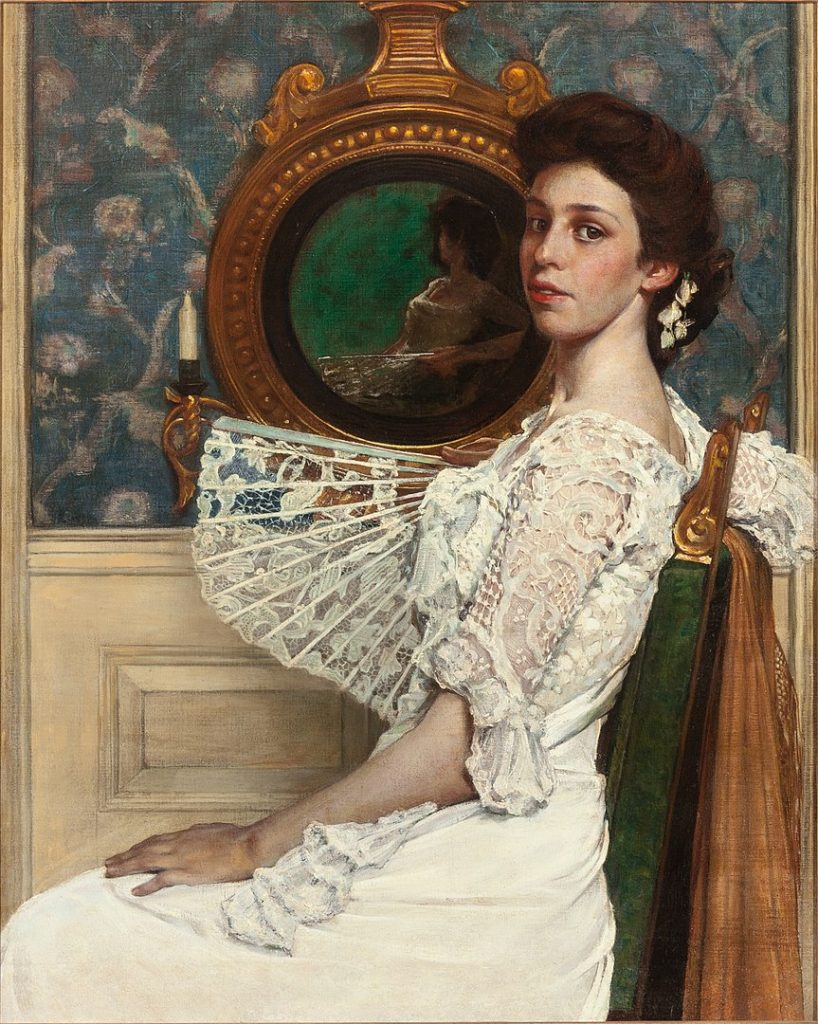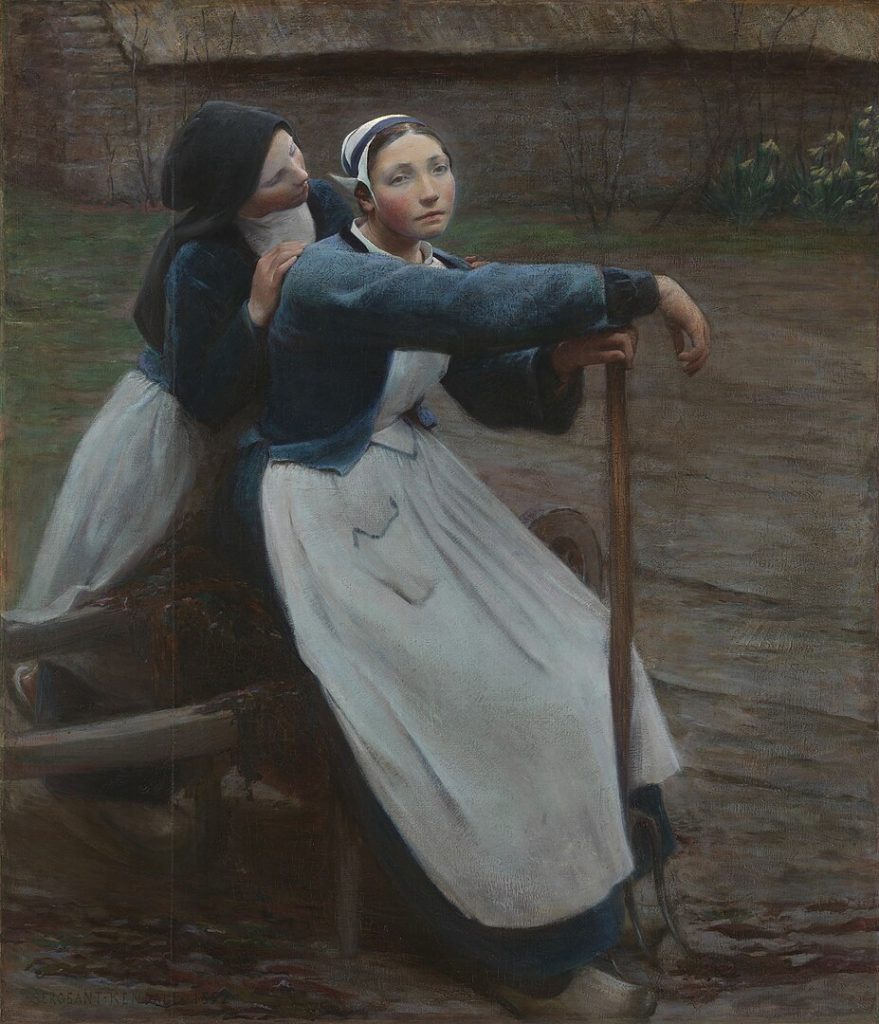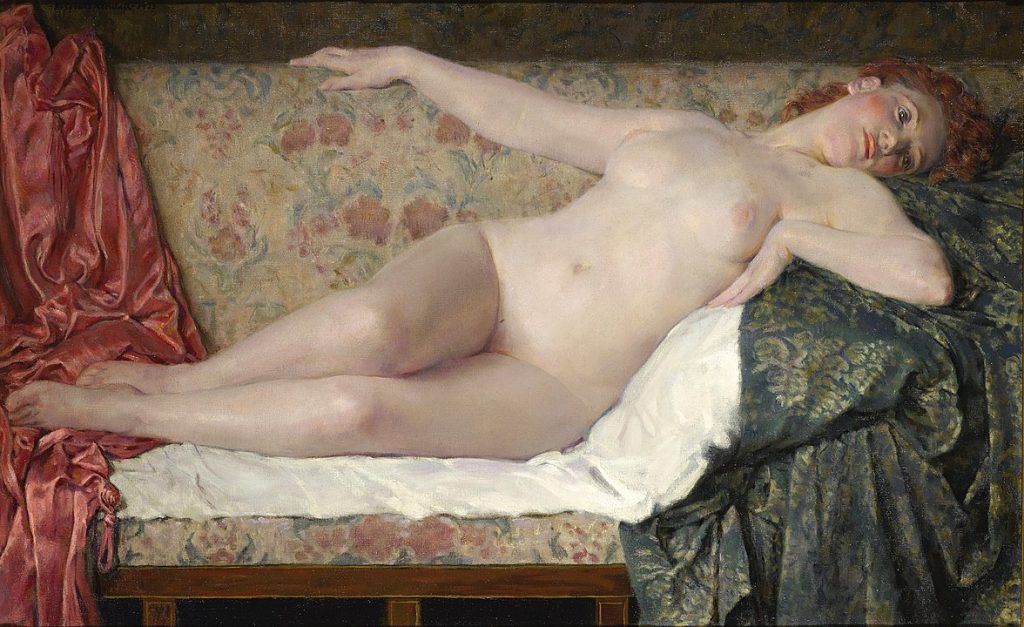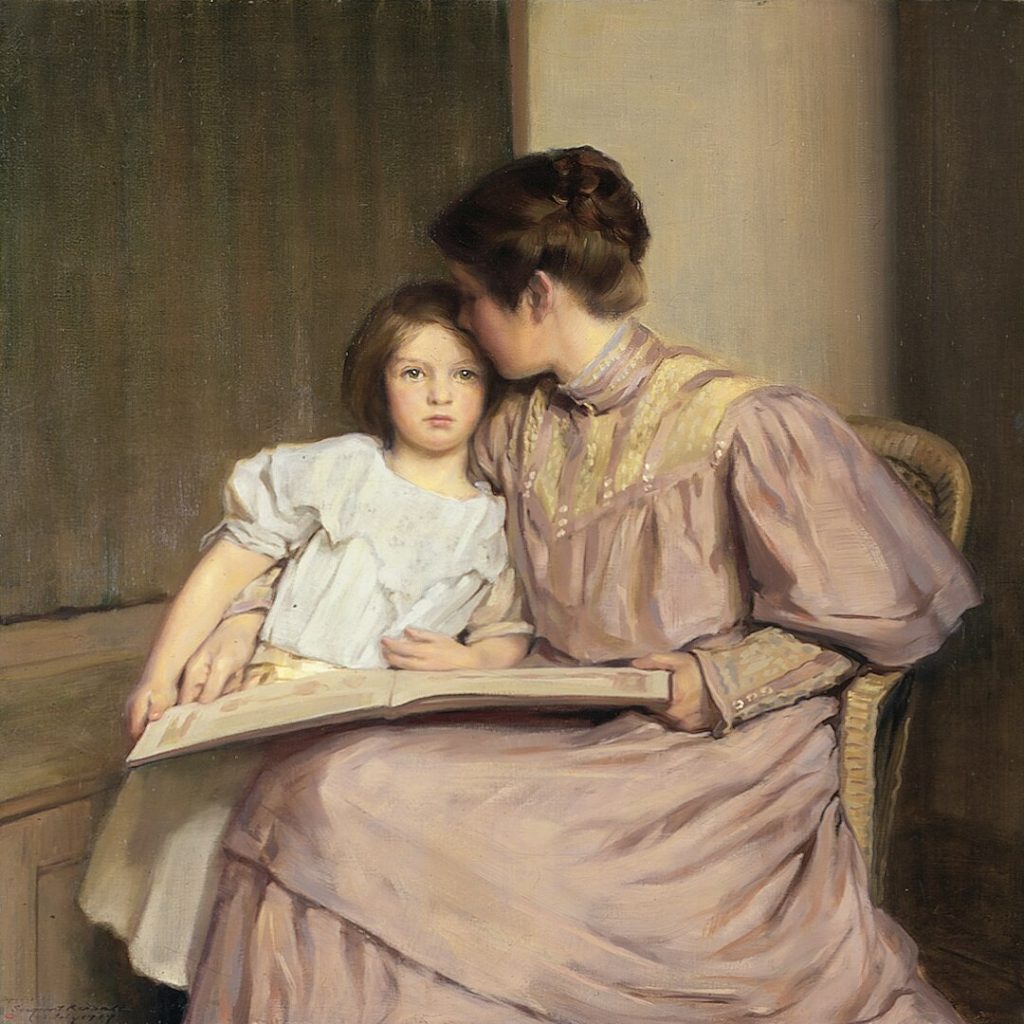
In the annals of art, where canvases capture the soul’s expression and strokes of genius paint the portrait of an era, the life of William Sergeant Kendall stands as a testament to the transformative power of creativity. Born to a family of artists in Spalding, Lincolnshire, in 1869, Kendall would emerge as a luminary in the world of American portraiture, leaving an indelible mark on the canvas of art history.
From his earliest days, Kendall displayed an innate affinity for the visual arts. His childhood was colored by the gentle strokes of his mother’s paintbrush, a talented artist herself. Amidst the pastoral landscapes of Lincolnshire, young William’s eyes absorbed the interplay of light and shadow, and his hands eagerly grasped the brushes that would later weave tales of beauty and grace.
Welcome to America
As the Kendall family migrated across the Atlantic, settling in New York City in the late 19th century, the bustling metropolis became a fertile ground for William’s artistic aspirations. The cacophony of urban life, the vibrant cultural tapestry, and the dynamic energy of the city fueled the young artist’s imagination. It was amidst the towering skyscrapers and the hum of city life that Kendall’s artistic voice began to resonate.

Enrolling in the Art Students League of New York, Kendall found himself under the guidance of renowned artists of the time. The academic milieu provided him with not only technical skills but also a profound appreciation for the various movements in art. The echoes of Impressionism, the allure of Realism, and the avant-garde spirit of the times all found a place in Kendall’s evolving aesthetic.
In the early 20th century, Kendall’s artistic journey took a significant turn as he ventured abroad to study in Paris, the epicenter of the art world. Under the tutelage of Jean-Paul Laurens at the Académie Julian, Kendall immersed himself in the bohemian atmosphere that pulsed through Montmartre. The narrow streets, the smoky cafes, and the vibrant studios became the backdrop to his artistic metamorphosis.
Parisian life infused Kendall’s palette with a newfound vibrancy. His canvases, previously touched by the muted tones of American landscapes, now burst forth with the bold hues inspired by the City of Light. The human form, a recurring motif in Kendall’s work, underwent a transformation influenced by the artistic revolutions of the European avant-garde.

Returning to the United States, Kendall brought with him not only a refined technique but also a revolutionary spirit that sought to break free from the confines of tradition. His portraiture, characterized by a profound psychological depth, captured the essence of his subjects beyond mere physical likeness. It was during this period that Kendall’s artistic prowess gained recognition, and he began to establish himself as a prominent figure in American art circles.
One of Kendall’s most notable works during this time was the portrait of famed American poet Robert Frost. In this masterful composition, Kendall not only captured the poet’s visage but also conveyed the very spirit of Frost’s verse – the rugged individualism, the connection to nature, and the profound introspection. The painting, like a lyrical echo, spoke volumes about Kendall’s ability to transcend the superficial and delve into the soul of his subjects.
As Kendall’s reputation soared, so did the demand for his portraits. His studio became a haven for the intellectual and artistic elite of the time. The walls echoed with the laughter of writers, the discourse of philosophers, and the stories of those whose lives he immortalized on canvas. Among his distinguished sitters were luminaries such as Theodore Roosevelt, Mark Twain, and John D. Rockefeller, each portrait a narrative etched with Kendall’s unique blend of technical finesse and empathetic insight.

Despite his success, Kendall remained a modest and introspective artist. His introspection found expression not only in portraiture but also in landscapes that reflected the inner landscapes of his psyche. The bucolic scenes of New England, with its rolling hills and tranquil meadows, became a recurring motif, imbued with a sense of nostalgia and introspective melancholy.
Trying New Things
The interwar years marked a period of artistic exploration for Kendall. The artist, while rooted in the traditions of portraiture, delved into the realms of abstraction. Influenced by the burgeoning modernist movements, Kendall’s brushstrokes became more expressive, his compositions more experimental. This period of experimentation, though less celebrated than his portraiture, underscored Kendall’s versatility and willingness to evolve with the shifting currents of artistic expression.
As the world plunged into the tumult of World War II, Kendall’s art took on a reflective and contemplative tone. The atrocities of war, the collective trauma, and the impermanence of life found expression in his later works. Kendall, now in his twilight years, channeled the wisdom garnered through a lifetime of artistic pursuit into canvases that spoke of the human condition with a poignant grace.

William Sergeant Kendall passed away in 1938, leaving behind a legacy that transcends the confines of time. His contributions to American portraiture, marked by an unwavering dedication to capturing the essence of his subjects, earned him a place among the masters of the genre. Beyond the strokes of his brush, Kendall’s life mirrored the evolution of American art in the early 20th century, reflecting a profound journey from the provincial landscapes of Lincolnshire to the cosmopolitan vigor of New York and the artistic crucible of Paris.
In the galleries that house Kendall’s portraits and landscapes, one can trace the contours of an artist’s soul—a soul that sought to unravel the complexities of humanity, both individual and collective. As admirers stand before his canvases, they become witnesses to a life woven into the fabric of art, a life that spoke through color, form, and the enduring power of creative expression.




